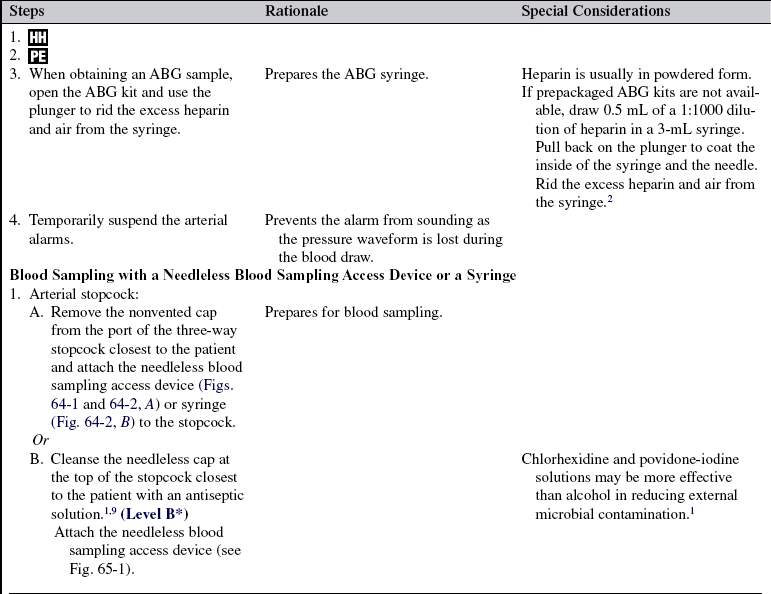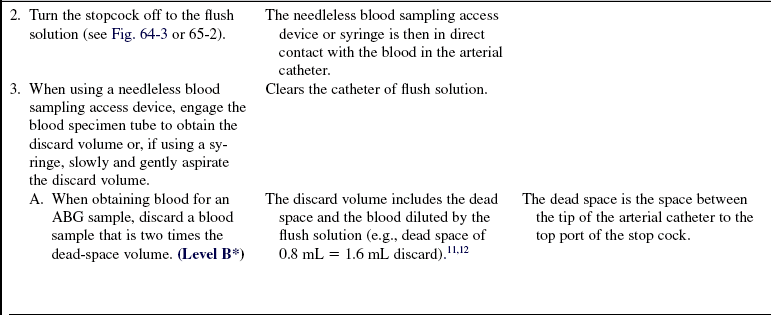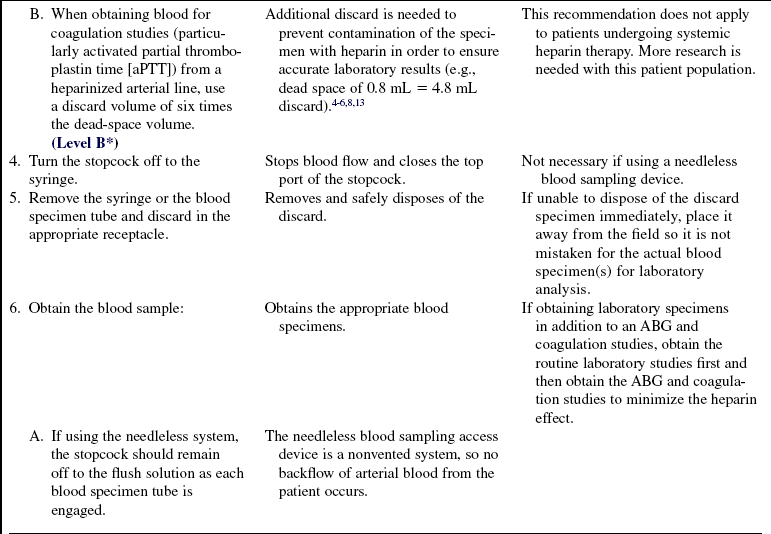PROCEDURE 64 • Knowledge of aseptic and sterile technique is necessary. • Knowledge of the vascular anatomy and physiology is needed. • Understanding of gas exchange and acid-base balance is necessary. • Technique for specimen collection and labeling should be understood. • Principles of hemodynamic monitoring are necessary. • Knowledge about the care of patients with arterial catheters (see Procedure 62) and stopcock manipulation (see Procedure 76) is needed. • Understanding of the closed arterial line blood sampling system is necessary. • Closed blood sampling systems provide the opportunity to reinfuse the blood to the patient after the laboratory sample is obtained to help reduce the risk of nosocomial anemia.3,7,10,14,15 • Appropriate blood specimen tubes (or arterial blood gas [ABG] kit) • Labels with the patient’s name and appropriate identifying data • Laboratory form and specimen labels • Goggles or fluid shield face mask • Needleless blood sampling access device • Extra blood specimen tube (for discard) • Sterile nonvented cap or needleless cap Additional equipment as needed includes the following: • Verify correct patient with two identifiers. • Ensure that the patient and family understand preprocedural teaching. Answer questions as they arise, and reinforce information as needed. • Expose the stopcock to be used for blood sampling, and position the patient’s extremity so that the site can easily be accessed.
Blood Sampling from an Arterial Catheter
PREREQUISITE NURSING KNOWLEDGE
EQUIPMENT
PATIENT ASSESSMENT AND PREPARATION
Patient Preparation
 Rationale: Prior to performing a procedure, the nurse should ensure the correct identification of the patient for the intended intervention.
Rationale: Prior to performing a procedure, the nurse should ensure the correct identification of the patient for the intended intervention.
 Rationale: Understanding of previously taught information is evaluated and reinforced.
Rationale: Understanding of previously taught information is evaluated and reinforced.
 Rationale: This prepares the site for blood withdrawal.
Rationale: This prepares the site for blood withdrawal.

 Rationale: Teaching provides information and may reduce anxiety and fear.
Rationale: Teaching provides information and may reduce anxiety and fear. Rationale: This explanation encourages patient cooperation during blood withdrawal.
Rationale: This explanation encourages patient cooperation during blood withdrawal. Rationale: This ensures a functional arterial catheter.
Rationale: This ensures a functional arterial catheter. Rationale: This assessment provides data for comparison.
Rationale: This assessment provides data for comparison.




